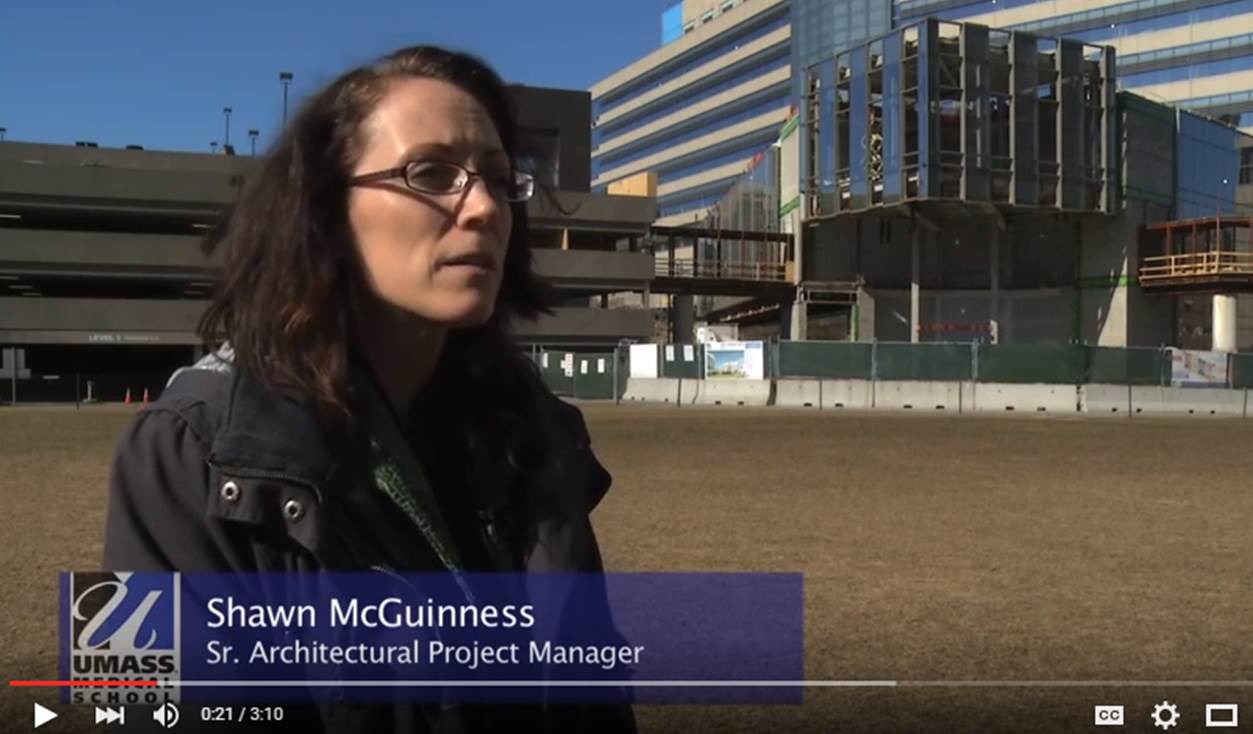LEED Silver and Gold
The Albert Sherman Center (ASC) is the newest building on campus. It is a 512,000-square-foot facility for biomedical research and education that opened in January of 2013.
The ASC earned LEED Gold. In the video at the right, see some of the sustainable design elements of the building. Read the LEED news announcement here http://www.umassmed.edu/news/news-archives/2013/01/sherman-center-earns-leed-gold-certification/
The Ambulatory Care Center (ACC) was opened in 2010 by UMass Chan Medical School in collaboration with its clinical partner the UMass Memorial Medical Center. The 253,000 square-foot ACC is home to a mix of patient-care, clinical research and educational activities. The building earned LEED SIlver. Ream more: http://www.umassmed.edu/news/news-archives/2012/10/ambulatory-care-center-gets-leed-silver-certification/
Medical School earns largest incentive in state history
In 2012 UMass Chan Medical School earned a $5.6 million award from National Grid—the largest incentive of its kind ever given by the company in Massachusetts—for an energy-efficient 14,000-square-foot expansion of its power plant.
The incentive is designed to help UMass Chan Medical School achieve its energy efficiency goals by providing innovative energy solutions that also will benefit the community through reduced greenhouse gas emissions. Read more and see a video of the presenation at: http://www.umassmed.edu/news/news-archives/2012/04/national-grid-gives-56-million-rebate-for-umms-power-plant/
Fume hood efficiency project at LRB
 A year of data is in, and the results are green. Improvements made to the air handling system and laboratory fume hoods at the Lazare Research Building (LRB) have reduced costs and energy consumption.
A year of data is in, and the results are green. Improvements made to the air handling system and laboratory fume hoods at the Lazare Research Building (LRB) have reduced costs and energy consumption.
All the air moved through the laboratories in the LRB is drawn fresh from the outside, not partially recycled from within the building. Fresh air is filtered, humidified, heated or cooled as needed, then delivered to the labs and ultimately exhausted to the atmosphere. The single-use approach is important for research laboratories, but it utilizes more energy than a standard commercial system.
Read more at: http://www.umassmed.edu/growinggreen/newsletter/december2014/lrbupdate/

